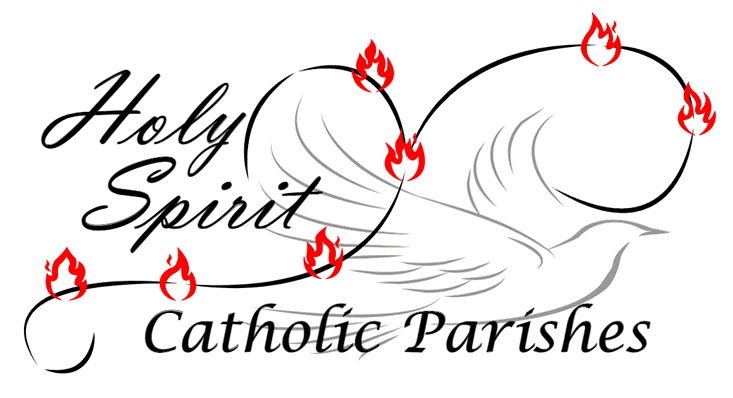HSCP Patron Saints
| Patron | Feast Day | Parish |
|---|---|---|
| Holy Trinity | Sunday after Pentecost | Hartington |
| Our Lady of the Seven Dolors | September 15 | Osmond |
| St. Michael the Archangel | September 29 | Coleridge |
| St. Joseph | March 19 (Spouse) | Ponca |
| May 1 (Worker) | ||
| St. Peter | February 22 (Chair) | Newcastle |
| June 29 (Peter & Paul) | ||
| St. Paul | January 25 (Conversion) | Plainview |
| June 29 (Peter & Paul) | ||
| St. Jane Frances de Chantal | August 12 | Randolph |
Holy Trinity
The most profound mystery of the Christian faith is that of the Trinity. The Church teaches us that although there is only one God, yet, somehow, there are three Persons in God. The Father is God, the Son is God, the Holy Spirit is God, yet we do not speak of three Gods, but only one God. They have the same nature, substance, and being.
Why do we believe God is Trinity? Because God has told us. Knowing God is the Trinity – three persons in one divine nature – is not something we could ever come up with on our own. No rational arguments, logical reasoning could ever have gotten us to the Trinity on our own. Only God himself could have revealed it. And so mysterious is this idea of the Trinity, that God chose to reveal it slowly over time. First in the Old Testament, God over and over again had to convince us that there is only one God. “I am the LORD, there is no other.” Then slowly he began to reveal his divine nature in three persons.
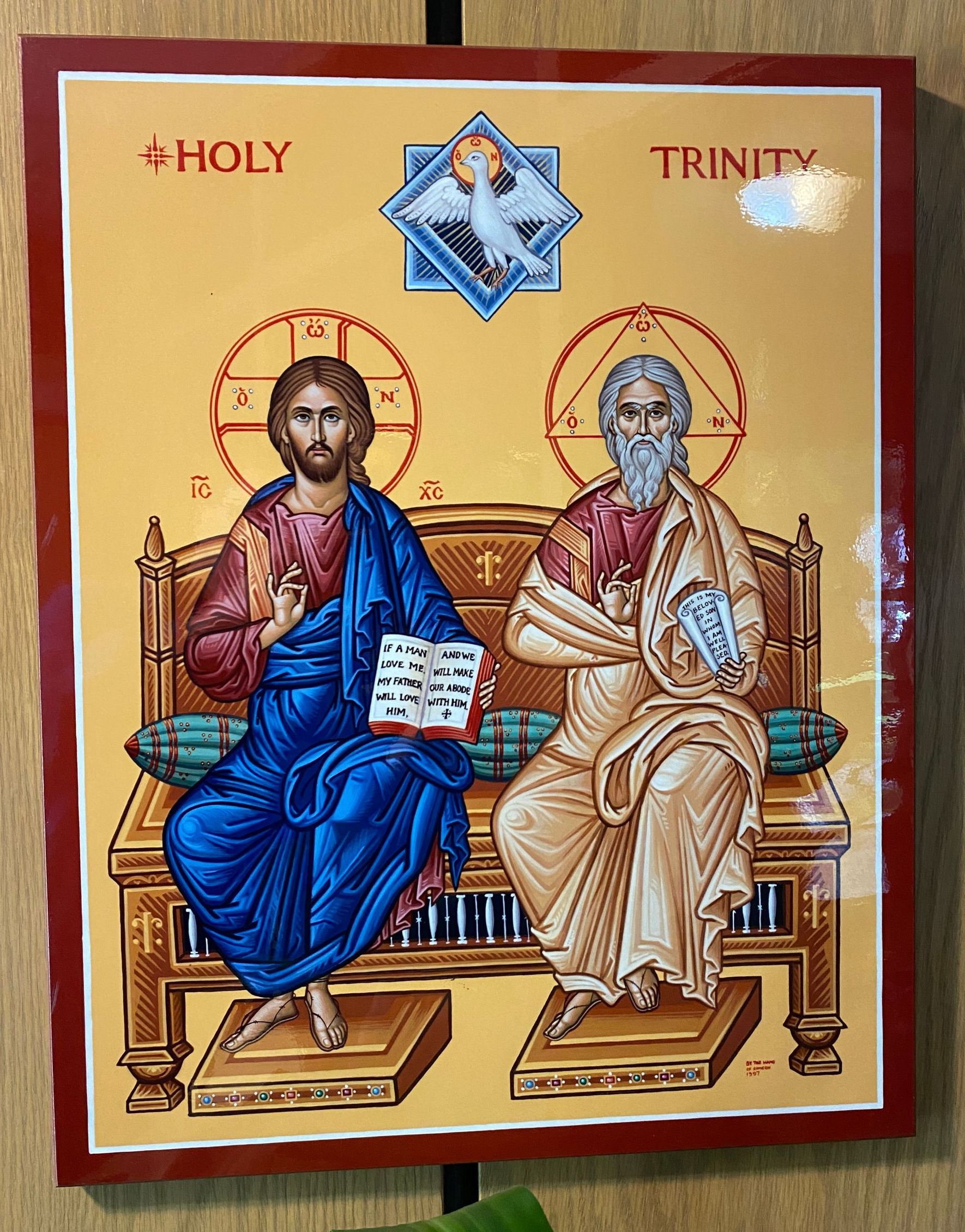
He fully revealed this immense mystery through Jesus Christ. Just before ascending to heaven Jesus told us: “Go teach all nations, baptizing them in the name of the Father and of the Son and of the Holy Spirit” (Matthew 28:19). We know that these Three are not just different ways of looking at one person. For at the Last Supper, Jesus told us: “I came forth from the Father.” So He is different from the Father. But He also promised: “If I go, I will send Him [the Paraclete] to you. . . . He will guide you to all truth" (John 16:28, 7, 13). So the Holy Spirit is also different.
The doctrine of the Trinity does NOT say there is one God and three Gods, or that God is one Person and three Persons, or that God has one nature and three natures. If we believed those things, then we would be illogical and worthy of ridicule. But the Church explicitly rejects those ideas. The doctrine of the Trinity says that there is only one God and only one divine nature but that this one God exists in three Persons. That is a great mystery, but it is not a logical self-contradiction.
In the words of the Athanasian Creed: “This is what the Catholic faith teaches: we worship one God in the Trinity and the Trinity in unity. Neither confounding the Persons, nor dividing the substance. For there is one person of the Father, another of the Son, another of the Holy Spirit. But the Father and the Son and the Holy Spirit have one divinity, equal glory, and coeternal majesty. What the Father is, the Son is, and the Holy Spirit is. The Father is uncreated, the Son is uncreated, and the Holy Spirit is uncreated. The Father is boundless, the Son is boundless, and the Holy Spirit is boundless. The Father is eternal, the Son is eternal, and the Holy Spirit is eternal. Nevertheless, there are not three eternal beings, but one eternal being. So there are not three uncreated beings, nor three boundless beings, but one uncreated being and one boundless being. Likewise, the Father is omnipotent, the Son is omnipotent, the Holy Spirit is omnipotent. Yet there are not three omnipotent beings, but one omnipotent being. Thus the Father is God, the Son is God, and the Holy Spirit is God. However, there are not three gods, but one God. The Father is Lord, the Son is Lord, and the Holy Spirit is Lord. However, there are not three lords, but one Lord. For as we are obliged by Christian truth to acknowledge every Person singly to be God and Lord, so too are we forbidden by the Catholic religion to say that there are three Gods or Lords. The Father was not made, nor created, nor generated by anyone. The Son is not made, nor created, but begotten by the Father alone. The Holy Spirit is not made, nor created, nor generated, but proceeds from the Father and the Son. There is, then, one Father, not three Fathers; one Son, not three sons; one Holy Spirit, not three holy spirits. In this Trinity, there is nothing before or after, nothing greater or less. The entire three Persons are coeternal and coequal with one another. So that in all things, as it has been said above, the Unity is to be worshiped in Trinity and the Trinity in Unity. He, therefore, who wishes to be saved, must believe thus about the Trinity.”
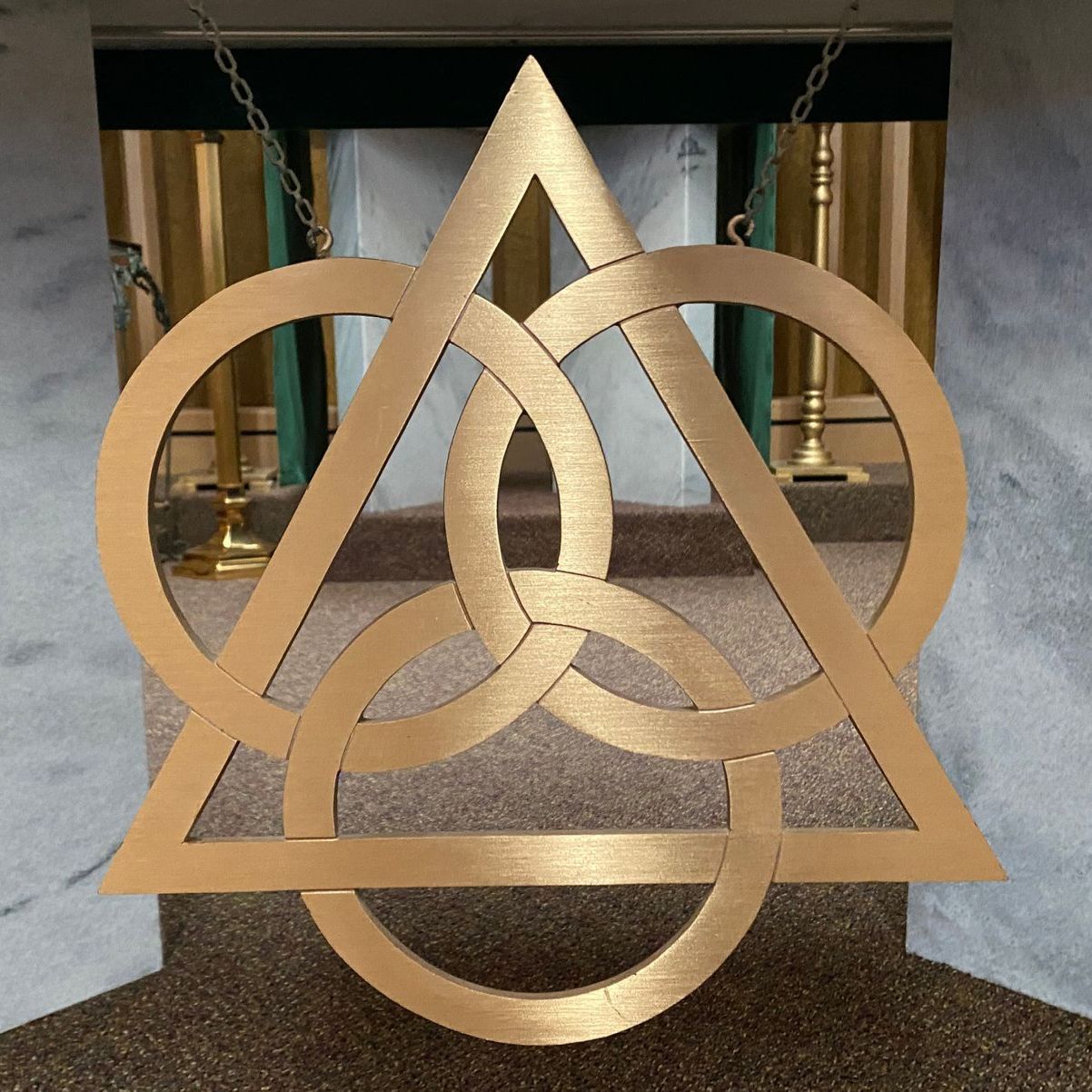
Knowing that God is three persons in one God, tells us that he is love. Think about it: in order for there to be love there has to be more than one person. For example, in marriage we have the love between husband and wife. The husband loves his wife, saying “I give my whole self to you, to stick with you through everything.” The wife then returns this love, giving her whole self back to him. And the love between them is so real that it forms the foundation of the family, even bringing into existence new persons, their children. From all eternity the Father loves the Son, giving the Son all that he is. The Son, Jesus, returns that loves back to the Father, And the love between them is so infinite and real that that love is a third person, the Holy Spirit. Human love is modeled after the very love of the Trinity! We are made for love because God is love. God is love, so God is Trinity.
Our Lady of the Seven Dolors
Devotion to Our Lady of Sorrows became a standard devotion in the Church around the 14th century. It was revealed to St. Bridget of Sweden (1303-1373) that devotion to the Blessed Virgin Mary's Seven Sorrows would bring great signal graces. The devotion consists in praying seven Hail Mary’s while meditating on the Seven Sorrows of Mary.
The Blessed Virgin Mary grants seven graces to the souls who honor her daily by meditating (i.e. mental prayer) on her seven sorrows (dolors). The Hail Mary is prayed seven times, once after each meditation.
- "I will grant peace to their families."
- "They will be enlightened about the Divine Mysteries."
- "I will console them in their pains and I will accompany them in their work."
- "I will give them as much as they ask for as long as it does not oppose the adorable will of my Divine Son or the sanctification of their souls."
- "I will defend them in their spiritual battles with the infernal enemy and I will protect them at every instant of their lives."
- "I will visibly help them at the moment of their death. They will see the face of their Mother."
- "I have obtained this grace from my divine Son, that those who propagate this devotion to my tears and dolors, will be taken directly from this earthly life to eternal happiness since all their sins will be forgiven and my Son and I will be their eternal consolation and joy."

Mary, in a unique way, willingly suffered alongside her Divine Son as he gave his life to save the world, and she felt the bitterness of his passion as only a mother can. This devotion is especially remembered during September, the Month of Our Lady of Sorrows (the feast of Our Lady of Sorrows is September 15th), and during the season of Lent.

1. Simeon’s Prophecy
Simeon’s prophecy during the presentation of Jesus (see Lk 2:35). Like all firstborn Jewish males, the baby Jesus was taken to the Temple in Jerusalem to be presented to God. According to Luke’s Gospel, there was, in the Temple, a devout old man named Simeon who joyfully recognized Jesus as the long-awaited Messiah.
The happiness of this moment turned somber, however, when Simeon prophesied that the Child’s life would be one of “contradiction.” This prophetic announcement would indeed be fulfilled as the very people Jesus came to save from sin would reject, insult and eventually murder Him.
Simeon further indicated that Mary, too, would suffer, that sharing in His life of rejection would be like a sword piercing her soul. Certainly, such foreboding prophecies must have troubled the young mother.
2. Flight into Egypt
The flight of the Holy Family into Egypt (see Mt 2:13). Simeon’s prophecy was soon realized. The Gospel of Matthew tells us that when alerted by the Magi to the birth of Jesus, King Herod of Judaea worried that this Child, proclaimed as the King of the Jews, would become a threat to his throne. So, Herod ordered the killing of all boys 2 years old or younger, in and around Bethlehem.
During a dream, an angel warned Joseph to take Mary and Jesus into Egypt. Despite the prospect of such a long journey, Joseph left without hesitation, and the Holy Family remained in Egypt until Herod died. That the Son of God would begin life fleeing from His homeland was yet another indication to Mary of the difficult road Jesus was destined to walk.
3. Loss of the Child Jesus for three days
The loss of the Child Jesus for three days (see Lk 2:41-46). When Jesus was 12 years old, St. Luke reports, He went with His parents from Nazareth to Jerusalem to celebrate the Passover. The men traveled together in one group, the women in another; the children could travel with either group.
On the way home, Mary and Joseph discovered that Jesus was not with the men or the women. Greatly distressed, they rushed back to Jerusalem and, after three days of desperate searching, found Him unharmed in the Temple conversing with teachers of Jewish law. He was not lost and wondered aloud to a relieved but confused Mary and Joseph, “How is it that you sought me?”
In this event, Our Lady was painfully reminded that Jesus belonged first and foremost to God.
4. Meeting Jesus on His way to Calvary
Meeting Jesus on His way to Calvary (see Lk 23:27-31). Tradition holds that Mary was among the women that Scripture tells us lamented Christ’s painful walk with the cross along the way to Calvary. Mary’s grief must have been extreme as she witnessed Jesus, unjustly accused, stumbling, falling with the cross on the road to the place He would die.
She had also likely been part of the crowd that was present when Pilate handed Him over to be crucified, but she could only watch in agonizing sorrow. Now, coming face to face with Him, Mary saw the bleeding, swollen, pitiable state of her Son. His helplessness, desolation and abandonment penetrated her heart.
5. Beneath the Cross
Beneath the cross (see Lk 23; Jn 19). The Romans used public crucifixion as the form of execution for non-Roman criminals. The Gospels tell us that Mary stood with a few followers of Jesus watching His crucifixion. She no doubt wept to see Him cruelly nailed to a cross, to see the soldiers gamble for His clothes, and to watch His slow, torturous death.
How awful it is for any parent to watch a child die — and no one ever endured more agony than Mary. She was the only person who truly understood who He was and, in her heart, she died with Him.
6. Jesus taken down from the Cross
Jesus is taken down from the cross (see Lk 23; Jn 19). According to Scripture, Joseph of Arimathea took the body of Jesus down from the cross; according to popular tradition, Joseph laid Him in the lap of His grieving mother.
Mary saw the bruises and wounds from all the physical torture Jesus had experienced, including the great open wound caused by the Roman soldier’s lance. She who had given Him His Body and Blood cradled her lifeless Son, the Son of God, in her arms.
7. Jesus is placed in the Tomb
Jesus is placed in the tomb (see Mk 15; Lk 23; Jn 19). Mary, broken and grief-filled, no doubt watched as Joseph of Arimathea and Nicodemus prepared the body of Jesus for burial. They acted without delay, since the Mosaic Law required burial before nightfall.
We can only try to comprehend the immensity of Our Lady’s suffering when the tomb was sealed, as she thought about all the anguish and pain He had endured.
On all these seven occasions, and no doubt many more, our Blessed Mother shared the sufferings of her Son. The sword, as Simeon predicted, did indeed pierce her soul. When we meditate on these events, we learn to join our own sufferings to those of Jesus and Mary, so that we ourselves might grow in holiness.
Source: Simply Catholic
St. Michael the Archangel
St. Michael is one of three archangels mentioned by name in the Sacred Scriptures, along with Gabriel and Raphael. The name Michael means "Who is like God?" The Archangel Michael is mentioned in four passages of Scripture:
- Archangel Gabriel speaking to Daniel: “... your prayer was heard. Because of it I started out, but the prince of the kingdom of Persia stood in my way for twenty-one days, until finally Michael, one of the chief princes, came to help me. I left him there with the prince of the kingdom of Persia, and came to make you understand what shall happen to your people in the last days … Soon I must fight the prince of Persia again. When I leave, the prince of Greece will come; but I shall tell you what is written in the book of truth. No one supports me against these except Michael, your prince …” (Daniel 10:13, 20-21)
- “At that time there shall arise Michael, the great prince, guardian of your people …” (Daniel 12:1)
- “Yet the archangel Michael, when he argued with the devil in a dispute over the body of Moses, did not venture to pronounce a reviling judgment* upon him but said, “May the Lord rebuke you!” (Jude 9)
- “Then war broke out in heaven; Michael and his angels battled against the dragon. The dragon and its angels fought back, but they did not prevail and there was no longer any place for them in heaven. The huge dragon, the ancient serpent, who is called the Devil and Satan, who deceived the whole world, was thrown down to earth, and its angels were thrown down with it.” (Revelation 12:7-9)
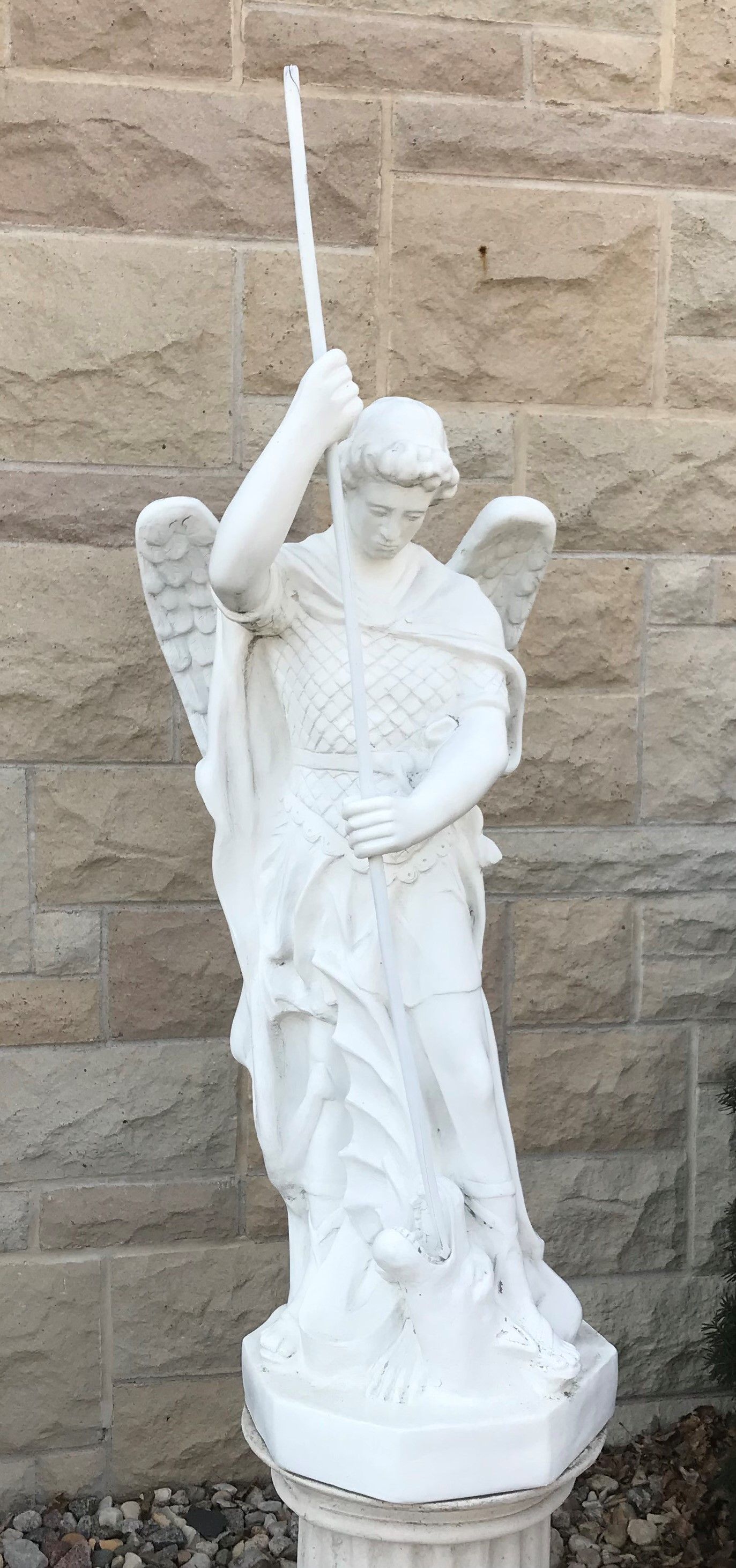
Following these Scriptural passages, Christian tradition gives to St. Michael four offices:
- To fight against Satan. Thus you see images of Michael in battle against the devil.
- To rescue the souls of the faithful from the power of the enemy, especially at the hour of death.
- To be the champion of God’s people, the Jews in the Old Law, the Christians in the New Testament; therefore he was the patron of the Church, and of the orders of knights during the Middle Ages.
- To call away from earth and bring men’s souls to judgment
Catholics frequently turn to St. Michael for protection and guidance. The "Prayer to Saint Michael" specifically implores his defense against the forces of darkness.
Pope Leo XIII wrote the Saint Michael prayer in 1884, after seeing a frightening vision: evil spirits trying to fulfill Satan’s boast to destroy our Lord’s Church. The Pontiff saw St. Michael casting Satan and his demons back into Hell, so he composed this prayer for his protection. Pope Leo XIII instructed the Saint Michael prayer to be prayed after every low Mass. While no longer required today, some parishes maintain the devotion to pray the prayer after Mass, part of the rosary, or in personal devotions.

Prayer to St. Michael
St. Michael the Archangel, defend us in battle, be our protection against the wickedness and snares of the devil. May God rebuke him we humbly pray; and do thou, O Prince of the Heavenly host, by the power of God, cast into hell Satan and all the evil spirits who prowl about the world seeking the ruin of souls. Amen.
St. Joseph
St. Joseph was the husband of the Blessed Virgin Mary and the foster father of Jesus. He was chosen by God as the protector of the Christ Child and his Mother. Everything we know about Joseph comes from the Scriptures. A wonderful way to reflect upon Joseph from the Scriptures is meditating with the antiphons used in the Liturgy of the Hours for the Solemnity of St. Joseph, Spouse of Mary (March 19). Find the antiphons listed here and a recording of the sung antiphons here.
In 2021 the Church celebrated the Year of St. Joseph. Here is a link to a number of printable prayer resources created at that time:
Year of St. Joseph Prayer Resources.
“Doing God’s Will like St. Joseph” Talk by Fr. Vogel
“Passions of Jesus and St. Joseph” Homily by Fr. Vogel
Office of St. Joseph (Liturgy of the Hours)
St. Joseph is the patron saint of the Universal Church, of workers, and a happy death.
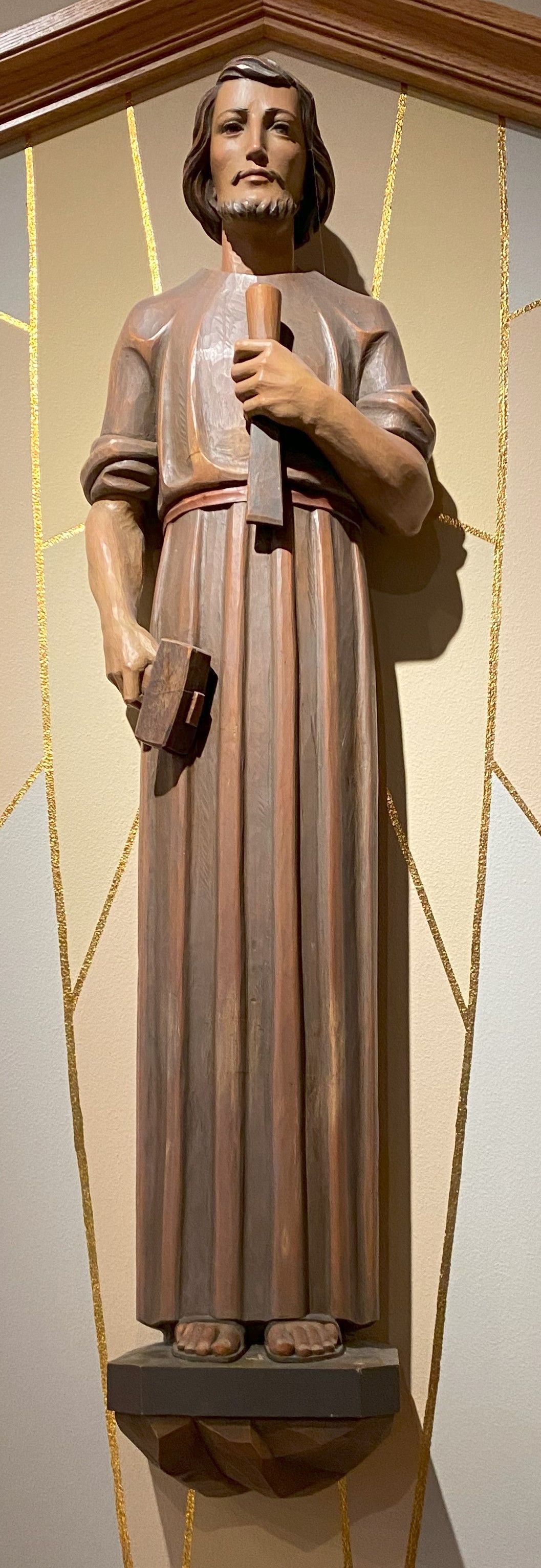
Below is a playlist of Year of St. Joseph homilies, sacred music, hymns and prayers. Click on the upper right corner to see the full playlist.
St. Peter the Apostle
Saint Peter was born Simon (or Simeon), son of Jona and brother of the Apostle Andrew. Simon was an inconspicuous fisherman in Bethsaida, a town on Lake Tiberias in Palestine. (also the home of the Apostle Philip). Simon was married and is believed to have had several children. He later settled in Capernaum, where he lived with his mother-in-law and was a successful fisherman.
One day his brother Andrew came to Simon and announced that he had found the Messiah. Andrew took him to meet Jesus. At their first meeting, Jesus gave him the name Peter, which means rock. (Matt 16:18) Peter then followed Jesus for some time as He preached in Galilee, Judea, and Jerusalem. However, after a time Peter returned to fishing until one day Jesus called to Peter and Andrew "Come ye after me and I will make you fishers of men." (Matt 4:19) From that time on Peter remained with Jesus until His Crucifixion.
Peter was a very much a mortal being with human faults. When Jesus asked Peter, James, and John to accompany him to Gethsemane, he fell asleep during Jesus' agony. When Jesus predicted Peter would deny Him, Peter was angry. Fear then led Peter to deny Jesus at the time of His trial, which later caused him remorse.
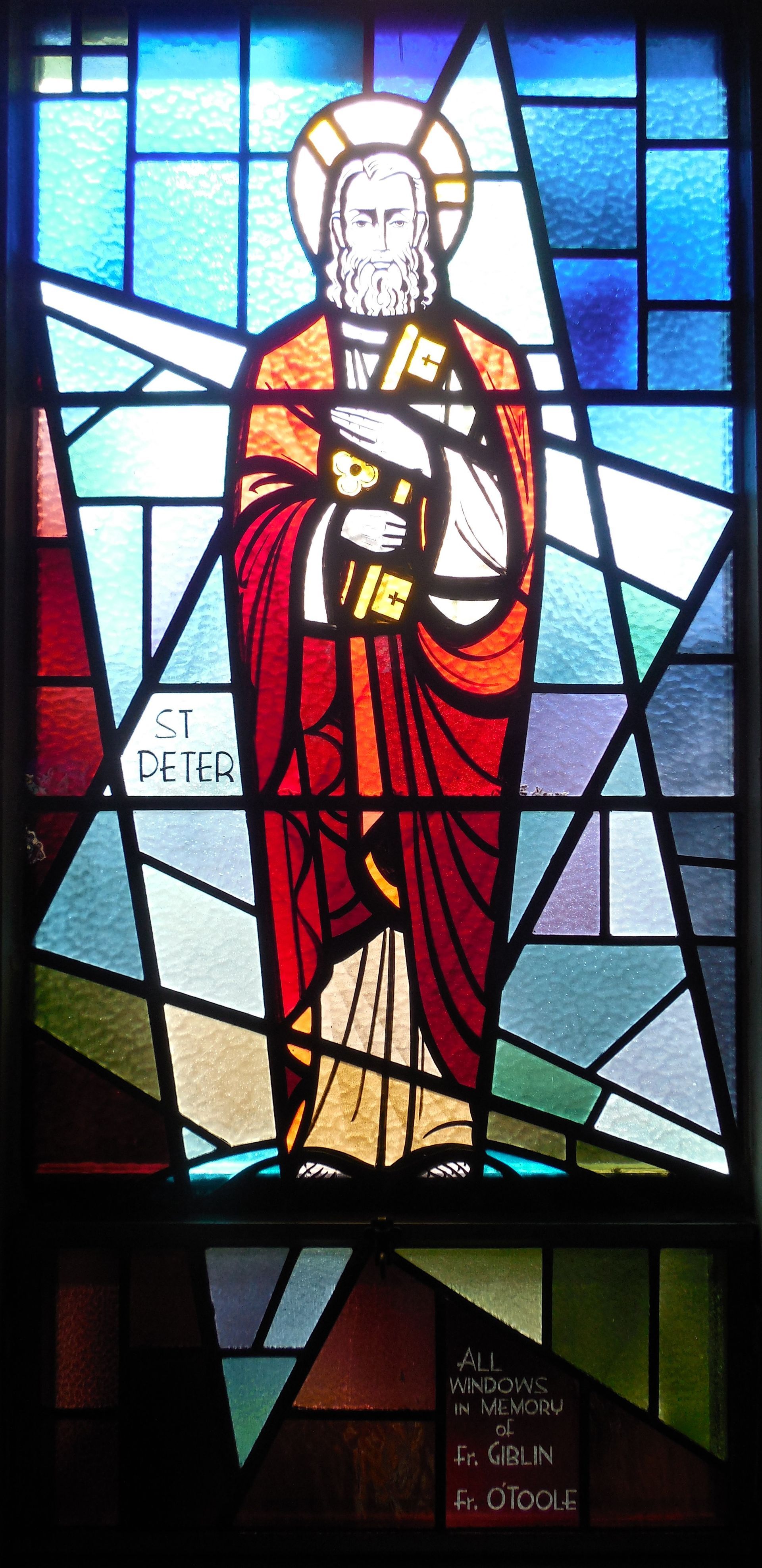
However, Peter's ardent love and faith for Christ more than made up for his failings. When most of the apostles were abandoning Christ, it was Peter who said "Lord, to whom should we go? We believe and are sure that Thou art that Christ, the Son of the Living God.” (John 6:69)
The failings of Peter also did not cause Jesus to lose His trust in him. Christ chose Peter, of all the apostles, as the one to whom He appeared on the day of the resurrection. Jesus also singled out Peter on numerous other occasions. He took Peter along with James and John to Mount Tabor to witness the Transfiguration. He sat in Peter's boat to preach to the multitude on the shores of Lake Gennesaret. When Jesus was walking on the water of the lake, He called to Peter to come across the lake. On the night before the Crucifixion, He chose Peter to stay with him in the Garden of Gethsemane.
But of all the honors displayed towards Peter, one of the most significant came on the occasion when Jesus said to Peter "Thou art Peter, and upon this rock I will build my church, and the gates of hell shall not prevail against it. And I will give to thee the keys of the kingdom of heaven. And whatsoever thou shalt bind upon earth, it shall be bound also in heaven; and whatsoever thou shalt loose on earth, it shall be loosed also in heaven." This statement made Peter the first head of His Church on earth.

After the ascension, Peter began his mission. He preached in various cities of Palestine and made many converts. Peter met some opposition from the Jewish supreme council, but was not seriously persecuted until about A.D. 42 when King Herod Agrippa I had him thrown into prison to be executed. However, a miracle allowed Peter to escape prison, and promptly leave Palestine.
The record of Peter's life is unclear from this point on. Evidence shows that he traveled widely in the Middle East. At some point in time Peter came to Rome, where he preached for some time and made Rome the center of the Church. He may have been killed during the persecutions of the Emperor Nero between A.D. 64 and A.D. 68. It is thought through tradition, that Peter was crucified head downward at his own request, probably. in the Neronian Gardens. The date of his death may have been June 29, the feast day of both St. Peter and St. Paul, In 1950, Pope Pius XII announced that St. Peter's tomb had been found beneath the Basilica in Rome.
(Celebrating 125 Years … 1873-1998, St. Peter’s Catholic Church, Newcastle, Nebraska, p. vii)
St. Paul the Apostle
St. Paul was originally known as Saul. He was a Roman citizen and a Pharisee. He even presided over the persecutions of the early Christians and was present at the martyrdom of St. Stephen (Acts 7:58, 8:3). However, Saul experienced a powerful vision that caused him to convert to Christianity while on the road to Damascus (Acts 9:1-9). He was duly baptized and took the name Paul (Acts 9:10-19).
The historic records bearing on St. Paul are fuller than those for any Scriptural saint. We have Paul's own wonderful writings, the fourteen letters included in the New Testament, which outline his missionary journeys, exhort and admonish the various Christian congregations, discuss ethics and doctrinal matters; and in the midst of all this we get a revelation of the man himself, his inner character, his problems and fears.
Epistles of St. Paul: Romans, 1 Corinthians, 2 Corinthians, Galatians, Ephesians, Philippians, Colossians, 1 Thessalonians, 2 Thessalonians, 1 Timothy, 2 Timothy, Titus, Philemon, Hebrews
- NB: Usually Hebrews was attached in Greek manuscripts to the collection of letters by Paul. Although no author is mentioned, a reference to Timothy (Heb 13:23) suggested connections to the circle of Paul and his assistants. Yet the exact audience and the author have long been disputed.
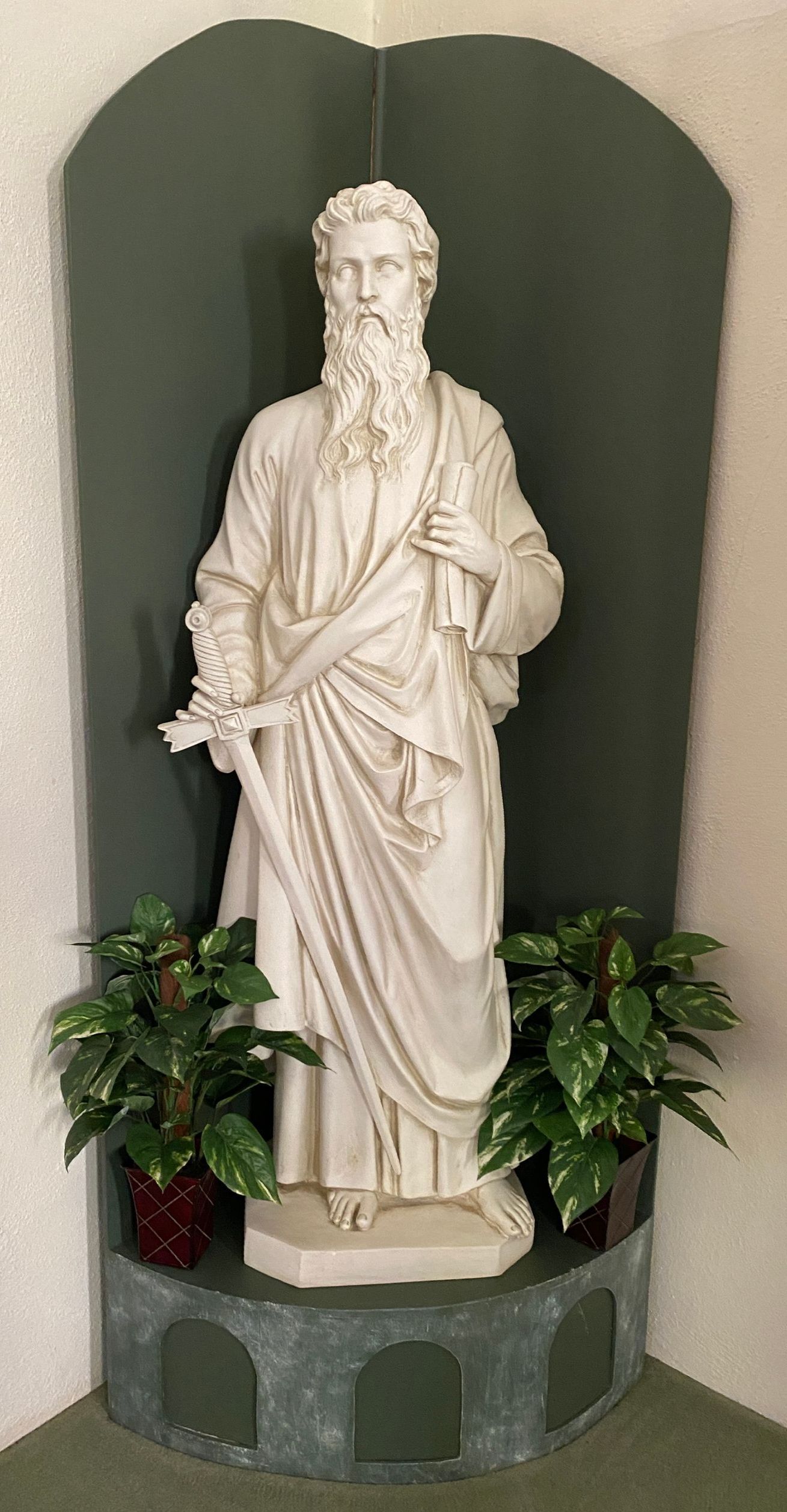
St. Paul's Missionary Journeys
- First Journey (Acts 13-14)
- Locations: Syrian Antioch; Cyprus (Salamis, Paphos); Pamphilia (Perga, Pisidian Antioch); Phrygia (Iconium); Lycaonia (Lystra, Derbe, Attalia); Syrian Antioch
- Companions: Barnabas and John Mark
- Second Journey (Acts 15-18)
- Locations: Jerusalem; Antioch (Syria); Lycaonia (Derbe, Lystra); Phrygia (Iconium); Galatia; Asia (Troas); Macedonia (Samothrace, Neapolis, Philippi, Amphipolis, Apollonia, Thessalonica, Berea); Achaia (Athens, Corinth); Ephesus
- Companions: Silas, Timothy, Luke
- Third Journey (Acts 18-21)
- Locations: Syrian Antioch; Lycaonia (Derbe Lystra); Phrygia & Galatia (Iconium); Asia (Ephesus); Macedonia (Neapolis, Philippi, Berea); Achaia (Corinth); Asia (Troas, Miletus); Israel/Judea (Tyre, Ptolemais, Caesarea, Jerusalem)
- Companions: Luke
- Fourth Journey (21-28)
- Locations: Israel/Judea (Jerusalem, Caesarea, Sidon); Pamphilia (Myra); Malta; Sicilia (Syracuse); Rome
- Companions: Luke
St. Jane Frances de Chantal
Jane Frances Fremiot was born in Dijon, France in 1572. Her mother died in childbirth when Jane was 18 months old. Her father raised her, her older sister and younger brother. In 1592 she married Christopher de Rabutin-Chantal, a soldier and courtier for Henry IV, King of France. They had four children. Their happiness was short-lived, since Christopher was accidentally shot by his cousin during a hunting expedition in 1601. He died 9 days later. To ease her grief, Jane often cared for the sick and fed the hungry, while still nurturing her own children. She put the needs of others before her own.
In 1604, Jane's father invited her to the series of Lenten sermons preached by Francis de Sales, the Bishop of Geneva. This was to be a milestone in Jane's life. De Sales became her spiritual director. She forgave her husband's shooter and devoted herself to charity and prayer.
By 1610, Jane had arranged for the future of her children and entered religious life at the Visitation Monastery founded by de Sales and de Chantal. Even after de Sales died in 1622, Jane continued founding Visitation monasteries throughout France. She also kept in touch with her children.
In 1641, Jane died while visiting the Visitation Monastery in Moulins, France. On her deathbed, she encouraged the assembled sisters of that community to remain constant in their vocation of living a life in Jesus.
(St. Jane Frances de Chantal Catholic Church, Q125 Celebration 2017)
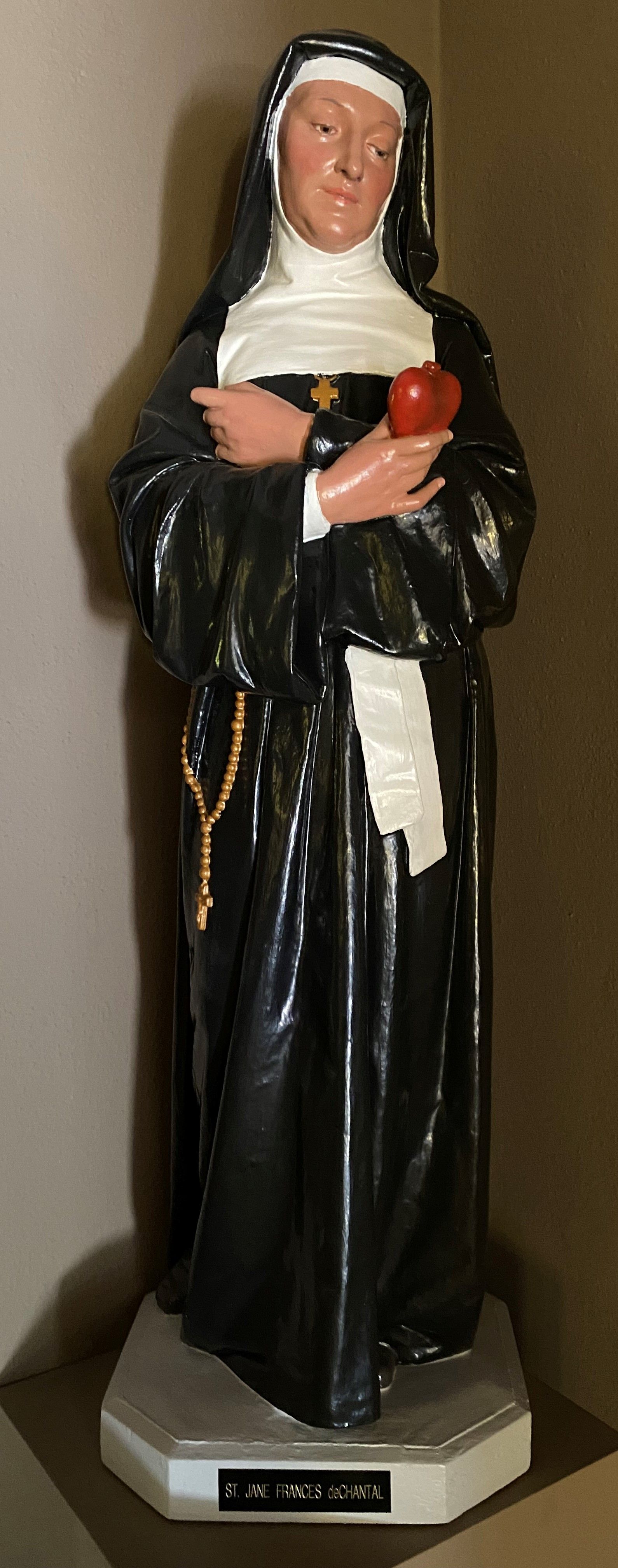
Litany
Holy Trinity, One God ... have mercy on us.
Holy Mary, Mother of God ... pray for us.
St. Michael ... pray for us.
St. Joseph ... pray for us.
St. Peter and St. Paul ... pray for us.
St. Jane Frances de Chantal ... pray for us.
Quick Links
Contact us
Office: 402-254-6559
Fax: 402-254-6553
email: holytrinity@hartel.net
406 South Broadway, PO Box 278
Hartington, NE 68739
